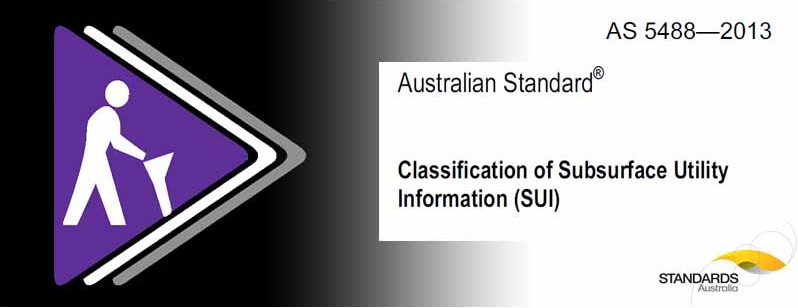Australia now have its first standard for the classification of subsurface utility information (SUI). It will create a common way of specifying the exact location and nature of a huge range of underground infrastructure, provide guidance on how information on subsurface infrastructure should be collected and how it should be conveyed to those who need it.
The new standard has been prepared by Standards Australia Committee IT-036, Subsurface Utility Engineering Information, made up of 19 organisations with an interest in the issue. These included Dial Before You Dig and the National Utility Locating Contractors Association (NULCA), who have played a significant role in ensuring that the standard is truly Australian and not simply a replication of the US standard.
The newly published standard is expected to improve public safety, reduce costly property damage and provide much more accurate information on the location, type and condition of subsurface utility infrastructure than has been available in the past. In addition to setting out a standard way of specifying the location of subsurface infrastructure it also provides guidance on how this information should be collected and on how it should be conveyed to those who need to use it.
The standard recommends that the location of subsurface infrastructure be specified absolutely in three dimensions. The standard – notes that this would be a significant improvement on the current and widely adopted method of specifying position relative to other infrastructure. It notes: “In countries prone to natural disasters or terrorist attacks, absolute positioning has a major advantage in locating subsurface utility assets and infrastructure after such an event.”
The scope of the document is considerable. It covers not only buried assets but also submerged assets and geographically covers Australia’s Exclusive Economic Zone, which means it would apply to submarine communications and power cables and offshore oil and gas pipelines.
It contains an extensive list of asset types and a suggested colour code for how different types of asset should be identified. However it does not specify how subsurface assets are identified on maps, plans and electronic records in terms of symbols, line types or colours. It notes that such depiction is the prerogative of the organisation that owns the asset. However, it does make recommendations on how such information should be recorded.
The standard sets out about 150 two and three letter alphanumeric codes designed to cover a comprehensive range of different types of subsurface infrastructure.
The newly published AS 5488 – 2013 is available from http://infostore.saiglobal.com/store/details.aspx?ProductID=1545666.


